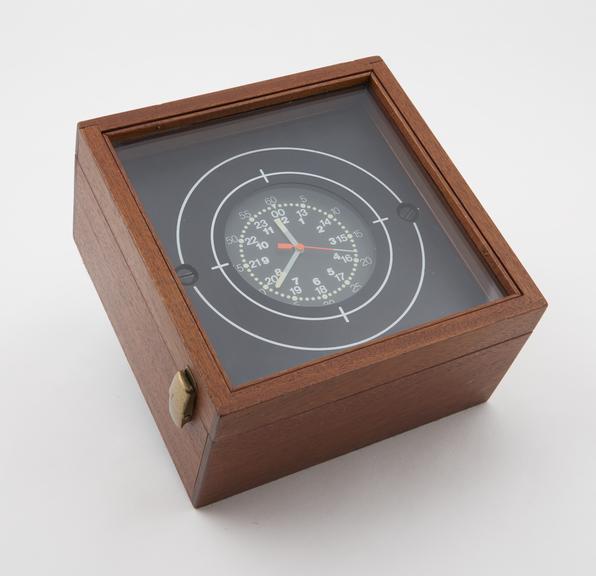Last week I showed you the Rolex wristwatch that went seven miles down to the bottom of the Marianas Trench, in the Pacific Ocean, in 1960. Let’s stay with the nautical theme with this marine chronometer.

Chronometers, as I’ve said before, were the timekeeping devices carried on board every ship from about 1810 to the 1980s to help navigate. The Royal Observatory Greenwich is the place to go for the whole chronometer story, but we too have some rather nice ones in our Measuring Time gallery.
Most ships navigate using GPS these days, but I know quite a few amateur and recreational sailors who still navigate with the chronometer method. They tend to use their wristwatch because modern quartz watches keep time just fine for longitude purposes.
The chronometer I just showed you (by luxury Swiss watchmakers Patek Philippe, whose remarkable factory in Geneva I once had the pleasure of visiting) is one of a small number of quartz versions produced in the 1970s and 1980s. They were more accurate than their mechanical counterparts but were often boxed to look similar. Their days were numbered, though, as GPS started to take off.
But the maritime world is getting increasingly concerned about the vulnerability of GPS to jamming. Last year, a major exercise off the coast of Tynemouth took place to demonstrate how many systems could be affected in the event of hostile GPS signal jamming. This parliamentary debate shows how worrying this is – definitely a story to watch.